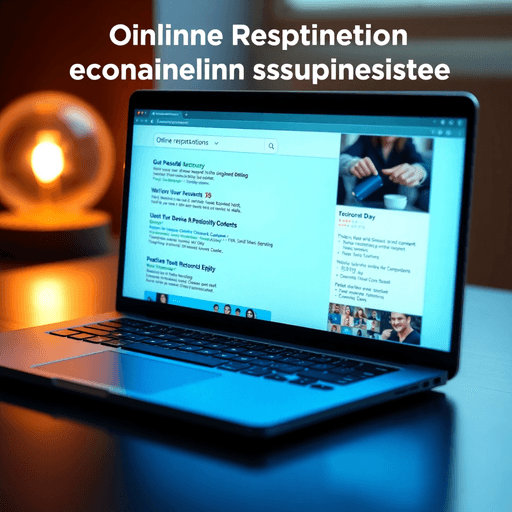Your online reputation shapes how others perceive you or your business. A single negative article, outdated review, or harmful comment can appear on Google and influence decisions—whether it’s a potential employer judging your character or a customer evaluating your services. The stakes are high. Defamatory content can damage trust, impact revenue, and linger for years if not addressed quickly.
Removing defamatory content from Google goes beyond simply flagging a page. It often involves coordinated steps such as reporting violations to Google, contacting website administrators, and sometimes taking legal action. This is where online reputation management comes into play. It combines these tactics with ongoing monitoring and positive content promotion to protect what matters most: your credibility.
If you want to remove defamatory content from Google, understanding the right process and acting swiftly makes all the difference. Utilizing online reputation monitoring tools can significantly aid in this process by providing you with the necessary resources to manage your image effectively.
Moreover, adopting proactive reputation monitoring tips can safeguard your online reputation and alert you to risks early. This guide walks you through practical steps for defending your reputation in today’s digital world, including strategies for managing and repairing your online reputation effectively.
In addition, mastering the art of business reputation management is essential for building, protecting, and restoring your online presence with effective strategies.
Understanding Defamatory Content Online
Defamation removal is crucial in protecting your online reputation. Defamatory content is any false statement presented as a fact that injures a party’s reputation. This can be especially damaging in the digital age, where information spreads rapidly and remains accessible indefinitely.
Types of harmful online content
- Libel: Written defamatory statements found in articles, blog posts, or social media.
- Slander: Spoken defamatory statements captured in videos or audio recordings.
- Invasion of Privacy: Unauthorized publishing of personal information.
- False Light: Misleading representations that could harm an individual’s or business’s public image.
Severe consequences of defamatory statements
- Personal Reputation Damage: Harm to an individual’s personal relationships and career prospects.
- Business Impact: Loss of customers, revenue, and overall brand trust.
- Emotional Distress: Mental anguish and stress caused by constant negative publicity.
Understanding what qualifies as defamatory is the first step towards effective defamation removal. Recognizing the types of harmful content and their potential impacts helps you take informed actions to protect your online presence.
One effective strategy is to boost your online credibility with positive reviews, engaging content, and a strong social media presence. These elements are essential in enhancing your online reputation and driving conversions up to 34%.
If you’re facing immediate issues with your online reputation due to defamatory content, implementing some fast reputation repair strategies can help revamp your reputation swiftly. Swift action ensures damage control and lays the groundwork for a strong online presence in the future.
Additionally, understanding how to compare and improve 5-star reviews can provide valuable insights into optimizing your online reputation for better conversions. Showcasing stellar reviews through 5-star review examples can also build trust and drive more business success online.
Steps to Remove Defamatory Content from Google
Digital reputation is shaped by what appears in Google’s search results. Removing defamatory content from Google involves a strategic approach that combines official reporting channels, legal documentation, and direct communication. Each method serves a distinct purpose and increases the likelihood of swift removal.
1. Reporting to Google
Google provides a structured pathway for individuals and businesses to request the removal of defamatory or harmful content through its legal removal request process. This route is particularly effective when the material in question violates Google’s policies or breaks the law in your jurisdiction.
Process of Reporting Defamatory Content to Google:
- Access the Legal Removal Request Tool:
Visit Google’s legal removal request page and select the appropriate option for defamation reporting. - Specify the Content Type:
Indicate whether you are dealing with web search results, images, videos (YouTube), or another Google product. - Provide URLs and Documentation:
Submit direct links (URLs) to every piece of content you want addressed. This ensures clarity and speeds up the review process. - Describe Why It’s Defamatory:
Detail how the content is false, damaging, and why it qualifies as defamatory under applicable laws. Use clear language and avoid emotional appeals—facts help reviewers make decisions faster. - Attach Legal Documents (If Available):
If you have obtained a court order confirming the content is defamatory, upload this document as part of your submission.
Example:
A small business owner discovers a fake review containing provably false accusations about illegal activity. By submitting a legal removal request detailing the inaccuracies, providing supporting business records, and attaching any relevant court orders, they strengthen their case for removal.
Key Details for Effective Requests:
- Precise identification: Always use exact URLs; avoid vague references to “content posted last week” or “the article about our company.”
- Comprehensive evidence: Screenshots may assist but always supplement with public URLs.
- Legal context: Reference local defamation laws when possible—Google evaluates requests in line with regional regulations.
Many users find that a well-documented request—involving specific details and legal context—receives faster attention than generic pleas for help. Persistence also helps; if new defamatory material appears, each new URL must be reported separately.
“Fix My Reputation Online guided me through every step of the Google legal removal request process. Their attention to detail made all the difference.”
— Louise H., FMRO client
Thorough documentation remains essential at this stage. For those facing ongoing attacks or organized campaigns, maintaining detailed records of all harmful content builds a strong foundation for further action if escalation becomes necessary.
2. Additional Strategies for Content Removal
The next layer in addressing online defamation involves reaching out directly to those hosting or publishing the content—an approach that often resolves issues before legal action becomes inevitable. In some cases, it might also be beneficial to explore options such as removing your Google Business Profile or deleting your business from Google Maps to protect brand consistency and online presence.
Furthermore, engaging professional services can expedite the process of removing negative content from Google, which can significantly
2. Contacting Website Owners
Direct communication with website owners often offers the fastest path to remove defamatory content from Google search results. Many webmasters do not wish to host potentially illegal or damaging material, especially if it could expose them to legal liability. By reaching out directly, you create an opportunity for swift content removal before escalating to the Google legal removal request process or litigation.
Steps for Effective Outreach:
-
Identify the Correct Contact:
- Use WHOIS databases, “Contact Us” pages, or site footers to locate webmaster email addresses.
- If the site is hosted on platforms like WordPress.com or Blogger, use their reporting tools or support contacts.
-
Craft a Professional Removal Request:
- Be factual and concise. State the URL in question and explain how the content constitutes defamation.
- Reference any relevant evidence (screenshots, URLs) supporting your claim of harm or falsehood.
-
Cease-and-Desist Letter:
- When informal requests are ignored, escalate with a formal cease-and-desist letter.
- This document should outline the specific defamatory statements, explain their impact, reference applicable laws (such as libel statutes), and set a clear deadline for removal.
- Template letters are available online, but personalized details increase effectiveness.
A well-constructed cease-and-desist letter demonstrates your seriousness and may prompt faster compliance, reducing the necessity for Google’s legal removal request process or court intervention.
Why Direct Communication Matters:
- Website owners can immediately edit or delete harmful posts—much quicker than waiting on search engines.
- Removing content at the source ensures it does not propagate across other sites.
- Resolving issues quietly avoids drawing additional attention to sensitive topics, preserving personal and business reputations.
By prioritizing direct communication and following structured steps—identification, outreach, escalation—you address defamation reporting efficiently while reserving legal and Google-based remedies for persistent cases. Additionally, incorporating effective public relations strategies into your approach can further enhance your brand image and credibility during this challenging process.
3. Pursuing Legal Action (If Needed)
There are situations where direct communication with website owners and cease-and-desist letters do not result in the removal of defamatory content from Google. When these initial steps fail, pursuing legal action becomes a necessary recourse for protecting your online reputation.
Legal action for defamation removal involves several key stages:
-
Consulting a Defamation Attorney:
Bringing a legal expert on board is essential. An attorney specializing in internet defamation will evaluate the strength of your case, help gather evidence, and advise on potential outcomes based on jurisdiction and local laws. -
Filing a Lawsuit:
If there is clear evidence of defamation, your attorney may recommend filing a lawsuit against the individual or entity responsible for publishing the harmful content. The complaint should detail how the statements are false, damaging, and qualify as defamation under relevant statutes. -
Obtaining a Court Order:
Courts can issue an injunction or order compelling the website owner to remove the offending material. This order is a critical document in the Google legal removal request process, as Google typically requires legal proof—such as a court order—to process requests to remove defamatory content from its search results. -
Submitting a Google Legal Removal Request:
Using Google’s legal removal request portal (https://support.google.com/legal/troubleshooter/1114905), you submit documentation including court orders and evidence of defamation reporting. Google reviews these materials before deciding whether to de-index or remove the URLs from search listings.
Legal intervention is often viewed as a last resort due to time and cost considerations, but it can be highly effective when other avenues have been exhausted.
When pursuing this route, maintaining detailed records of all communications and steps taken is crucial for both legal proceedings and successful content removal from Google’s search results. For more comprehensive strategies on removing harmful online posts, it’s beneficial to consult experts who specialize in online reputation management.
4. Search Engine Suppression Techniques
When dealing with defamatory content online, search engine suppression techniques can be an effective strategy to push down negative links in search results while promoting positive content about you or your business.
Strategies for Pushing Down Negative Links:
- Creating High-Quality Content: Regularly publish blog posts, articles, and press releases that highlight positive achievements and news related to you or your business. This approach is crucial for creating a positive brand image, which helps in building emotional connections and strengthening brand identity.
- Social Media Activity: Actively engage on social media platforms like Facebook, Twitter, LinkedIn, and Instagram to generate positive mentions and interactions.
- SEO Optimization: Optimize your website with strategic keyword targeting, meta descriptions, alt tags, and structured URLs to improve its relevance and visibility in search engine results. This falls under the realm of SEO reputation management, which involves advanced strategies to promote positive content effectively.
- Backlink Building: Acquire high-quality backlinks from reputable websites to boost your site’s authority and push down negative content.
- Guest Blogging: Write guest posts for authoritative blogs in your industry to create more positive content associated with your name or brand.
Benefits of Search Engine Suppression Techniques:
- Positive Branding: These techniques help in creating a positive online presence by highlighting favorable aspects of your personal or business reputation. A strong brand image can boost success by attracting top talent and driving customer loyalty.
- Long-Term Results: Consistent efforts in content creation and SEO optimization can lead to sustainable improvements in search engine rankings.
- Control Over Online Image: By actively managing the content available online, you have more control over how you and your business are perceived.
Limitations of Search Engine Suppression Techniques:
- Time-Consuming: These strategies require ongoing effort and may take time before noticeable results are seen.
- No Guaranteed Removal: Suppression does not equate to removal; the negative content remains online but is pushed down in search results. For more information on how to remove negative content from Google, expert strategies are available that can help erase such content effectively.
- Continuous Monitoring Needed: To ensure sustained positive visibility, continuous monitoring and updating of content are essential.
Effective search engine suppression involves a combination of these strategies tailored to your specific situation. While this approach may not eliminate defamatory content entirely, it helps mitigate its impact by overshadowing it with positive information.
Google’s Policies and Compliance Considerations in Content Removal Requests
Google has a specific way of dealing with defamation cases that aims to uphold freedom of speech while also meeting legal requirements. The company doesn’t automatically take down content just because it’s called defamatory; instead, Google looks at each request based on the laws and court orders of the country involved. In many places, only a legally binding decision—like a court order—forces Google to remove or de-list search results related to allegedly defamatory content.
Transparency in Google’s content removal policies remains central to their process. Google publishes regular Transparency Reports outlining the number and nature of content removal requests received, including those related to defamation. These reports provide insight into how requests are evaluated and acted upon, making the process visible to users and reinforcing trust in the system.
Key compliance factors include:
- Jurisdiction: Google abides by local regulations and only takes action when content violates applicable law.
- Evidence: Substantial evidence or an official judgment must accompany removal requests for alleged defamation.
- Right to Appeal: Both the complainant and the website owner may have opportunities to provide additional information or appeal decisions.
This process shows Google’s commitment to two things: protecting users from harm while also ensuring that information on the internet remains open and accessible. As a result, successful content removal often depends on both clear legal standing and thorough documentation in your request.
Conclusion
Effective reputation management techniques go beyond just removing negative content from Google. Once you successfully remove something, your focus should be on building and maintaining a positive online identity. This means actively monitoring for negative mentions, optimizing your website with relevant keywords, and encouraging satisfied clients or customers to leave genuine reviews. All these strategies help protect and grow your brand.
Your digital reputation is an ongoing project—not a one-time fix.
Whether you’re an individual looking to manage your online reputation or a corporation aiming to master corporate reputation management, FMRO’s commitment to confidentiality and rapid response can help. They provide essential tools for crisis management in PR, ensuring that individuals and businesses stay ahead of damaging content.
In addition, consistent application of these reputation management techniques ensures that your online presence reflects your true character or brand values, long after the immediate need to remove defamatory content has been addressed. For those seeking a more hands-on approach, FMRO also offers valuable resources for DIY online reputation management, providing expert-backed guides on managing online reviews and handling negative feedback.






